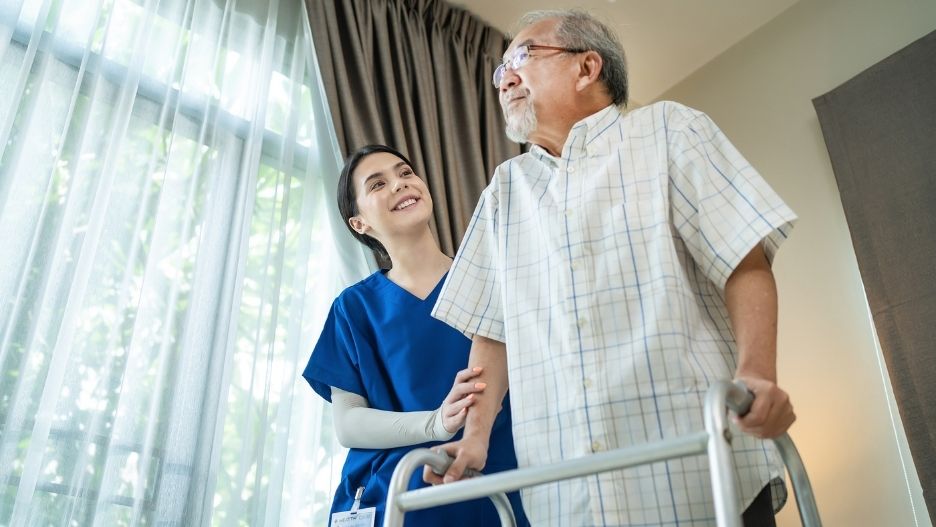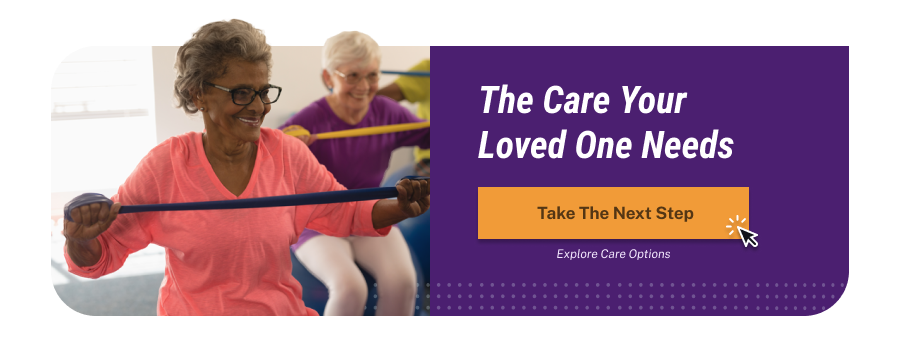5 Occupational Therapy Exercises To Do After Hip Replacement
Each year, there are 450,000 total hip replacements performed in the United States. Successful recovery depends upon following through with occupational therapy hip exercises to help you return to the activities you did before the surgery.
But what is occupational therapy, and how do occupational therapy hip replacement exercises help you? We’ve got the answers to these questions as well as five important exercises that will help you recover after your hip replacement surgery.
What Is Occupational Therapy?
Occupational therapy helps patients regain the skills they need for everyday living.
Therapists do this through specific exercises and teaching patients to use adaptive devices. For example, someone who has had a stroke may have difficulty putting on socks. An occupational therapist will help them learn to use a special tool to make this task easier.
An occupational therapist may also give you occupational therapy hip replacement exercises to aid in your recovery after surgery.
Occupational therapy is not to be confused with physical therapy, which works with larger muscle groups. For example, a physical therapist would help someone who has had a stroke learn to walk again. (Read more about the differences between physical and occupational therapy on our blog.)
Occupational therapists help those of all ages who are facing a variety of challenges. Despite the name, occupational therapists do not participate in job or career counseling.
5 Important Occupational Therapy Hip Replacement Exercises
The specific types of exercises you’ll need to do will depend upon your individual situation and the goals you set with your occupational therapist.
However, in general, following are five occupational therapy hip replacement exercises that are often vital to your recovery. You’ll discover that most of them involve “re-learning” activities that you did before your surgery. Mastering these often takes practice but doing this consistently helps place you on the right path to success.
Some of these tasks include:
1. Practice putting on socks
After hip replacement surgery, you cannot cross your legs and you have to be very careful not to bend your knees past a certain point. After your procedure, your doctor will give you explicit instructions that must be followed in order to prevent dislocating your hip.
However, this presents certain challenges–such as putting on socks.
Often, occupational therapists will have you use an assistive device that allows you to put a sock over a plastic “chute” and use ropes to lower it to your foot. Then, you simply place your foot in the chute and use the ropes to pull the sock on over your foot.
This can be a bit tricky at first, but by working with your therapist, you’ll find that you’ll soon be able to manage easily. This is one of the most common occupational therapy hip replacement exercises.
2. Learn how to put on shoes
Your occupational therapist will show you how to use this using a shoehorn and a “grabber tool”—a long wand with a claw-like grip at the end. The purpose is to eliminate or dramatically reduce the need for bending over. Bending over too much after a hip replacement can cause serious problems and should be avoided. The more you practice, the sooner you’ll be able to regain this ability.
3. Practice household tasks while sitting on a high stool
While you’ll not be doing any ironing or dishwashing while you’re at East Carolina Rehabilitation and Wellness (we take care of those mundane tasks for you), your therapist may work with you getting on and off a high stool. The goal is to ensure that your hip is correctly and properly aligned and to minimize any bending. This will pave the way for you to be able to perform some everyday household chores.
4. Learning to put on pants using a grabber
As we mentioned earlier, it’s vital that you don’t bend your body past a certain angle after surgery. This means you’ll be unable to reach down to put on pants. Occupational therapists will show you how to use the grabbers to slide your legs into your pants smoothly and easily—though it may take a bit of practice at first.
5. Practice entering and exiting a tub or shower
You may be using a shower chair or other assistive devices after your hip replacement. It’s very important to follow your occupational therapist’s instructions carefully to ensure your safety.
You should not attempt to take a shower without supervision.
Your occupational therapist will show you how to enter and exit the tub in a safe manner that ensures your hip is aligned.
Physical Therapy is Also a Vital Part of Rehabilitation
As we mentioned earlier, physical therapy concentrates on large muscle groups and movement while occupational therapy concentrates on activities of daily living—sometimes referred to as ADL.
You’ll also be doing some physical therapy exercises after your hip replacement. These may involve strength-building routines such as ankle pumps, knee bends and straight leg raises.
East Carolina Rehabilitation and Wellness: Your Best Choice for Rehabilitation in Greenville, NC
After you’re discharged from the hospital, you may wonder, what’s next? Where should you go from here? Often, you’re not ready to go home yet, and inpatient rehabilitation therapy is the best option. You’ll need to have physical therapy to help you regain your strength and occupational therapy hip replacement exercises geared toward helping you restore your ability to perform everyday tasks.
East Carolina Rehabilitation and Wellness is the best choice for your rehabilitation journey. Our goal is to get you back to your regular level of functioning as soon as safely possible, enabling you to return to your home and the ones you love.
If you or your loved one have just received a hip replacement and aren’t sure what your next step should be, talk to us. We’d love to show you what makes our rehabilitation facility the best in Greenville, NC.
Contact us today to schedule a tour.


